History of Lords
The world of cricket owes much of its fame to the Yorkshireman, Thomas Lord. For it was at Thirsk, Yorkshire on the 23 November 1755, that Thomas Lord was born. Lord, best remembered as the founder of Lord's Cricket Ground and for thirty-eight years he was associated with the Marylebone Cricket Club (M.C.C), which was to play a significant part of his life.
The Lord family later moved to Diss, Norfolk, where Thomas Lord was brought up. Once he was out of childhood, Lord moved to London and got a job as a bowler and general attendant at the White Conduit Club in Islington.
He was a wine merchant, professional cricketer and a public benefactor. His name throughout the world is as well known as Dickens and Shakespeare’s, and yet the history of this London club is sometimes overlooked.
Cricket in London started as far back as the eighteenth century with the White Conduit Club in the white stone conduit fields in the area now bordered by Pentonville Road, Penton Street, Upper Street and Tolpuddle Street. White Conduit Street takes its name from the popular house that had pleasure gardens and tea rooms used as the clubhouse, it is supposed that through this tea garden players still retire for tea during the match.
Some of the leading members of the White Conduit Club grew tired of the fields where they were playing, having to share the ground with unskilled ragamuffins from the local area. The Duke of Richmond and Lord Winchilsea decided to consulate with Thomas Lord for him to find them a new ground.
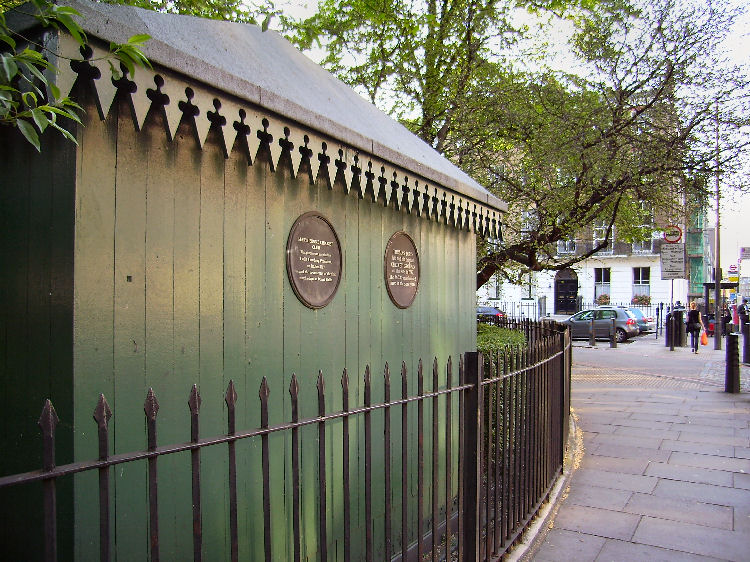
The Green Hut on the site of the first pavilion.
Lord, in agreement with the Portland family, obtained “Mary-le-bone Field” where Dorset Square now stands. During 1787 the new ground was ready for use, with Middlesex and Essex playing the first match there. 1792 they fenced off the field and a pavilion was added. An admission fee of sixpence, (2p) was charged with crowds of five thousand attracted.
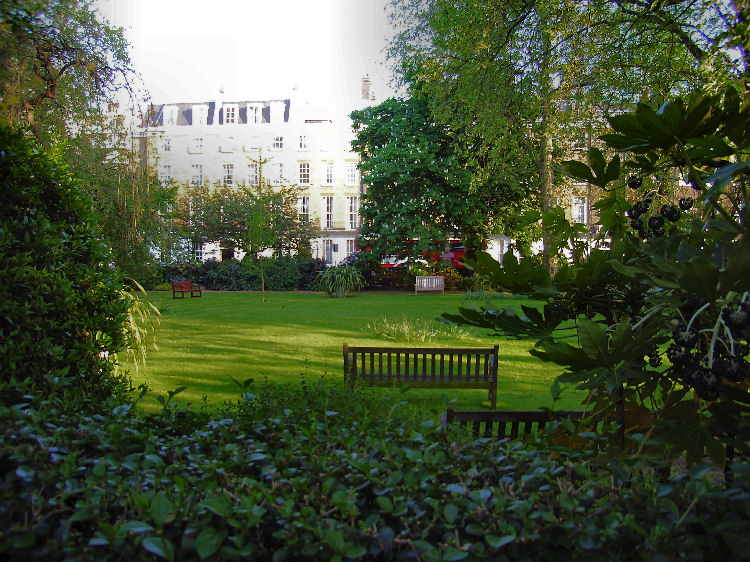
Dorset Square the first M.C.C Cricket ground.
Other games took place upon these fields when the cricket season was ended, including pigeon-shooting. This idyllic scene was abruptly ended by the builders moving in.
The next move was along to the “brickfield” now covered by Marylebone Station and St Johns Wood Road, with the ground being known as the “Greatfield” . The field was ready for use by 1809 although matches were still being played at Dorset Square for another two years. As the change was not popular, Lord had the turf of the old ground lifted and relayed to the new ground.
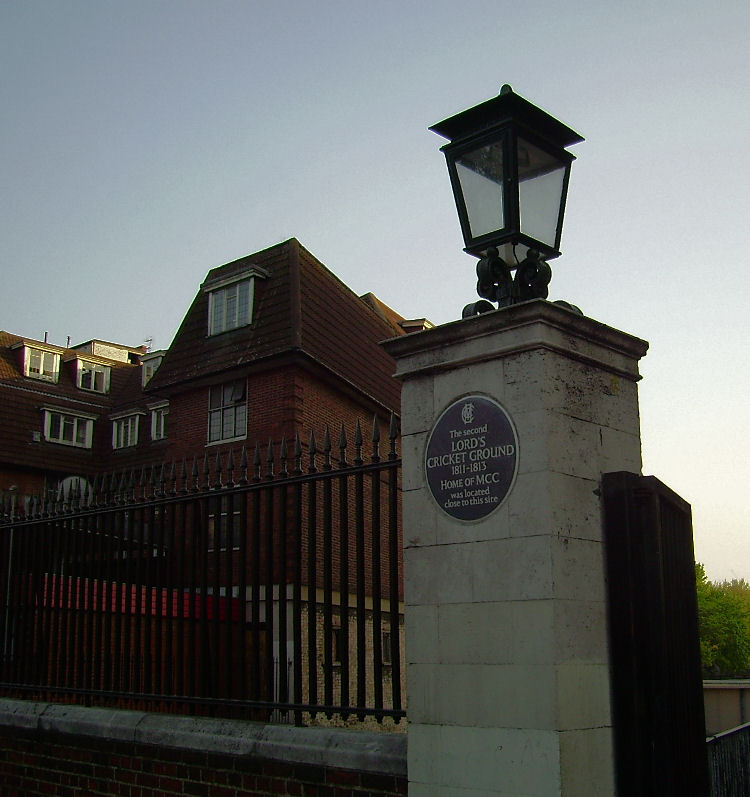
Blue plaque to the second ground
The M.C.C did not enjoy this ground for very long as someone had the bright idea of digging out the Regent’s Canel through the middle of the pitch.
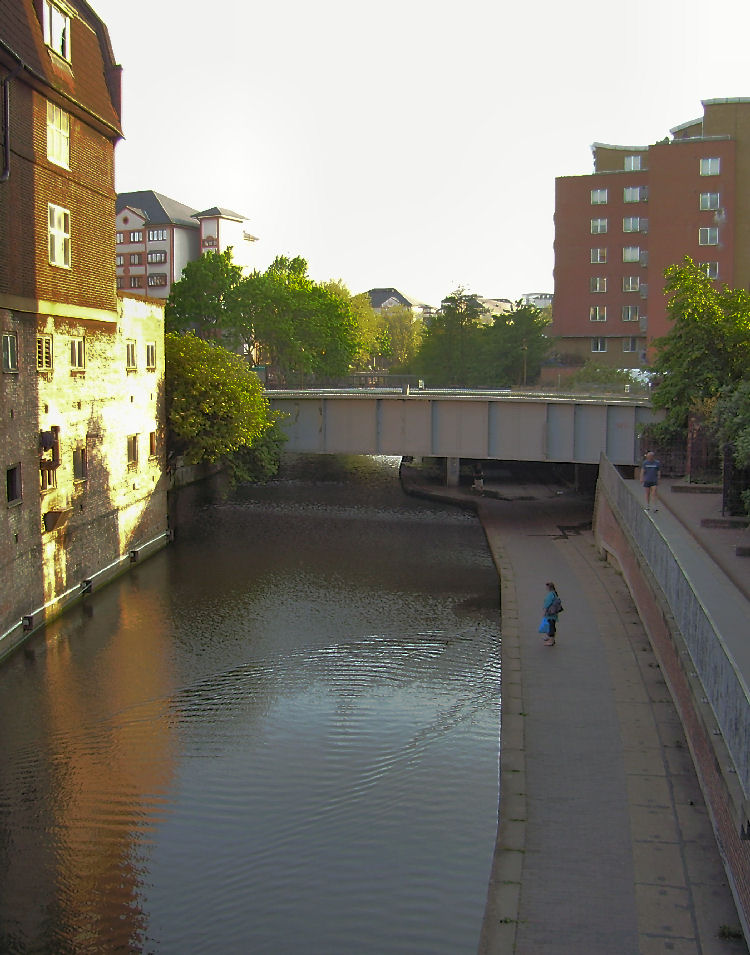
Water filled site where once Lords Cricket ground stood.
Removing the sacred turf one more time, Lord found the final resting place a few yards north of St John’s Wood Road, building a much grander. He put up a fence, built a pavilion and a tavern and also provided stabling. On the 22nd June 1814, the M.C.C. began a match against Hertfordshire on what is still known as Lord’s to this day.
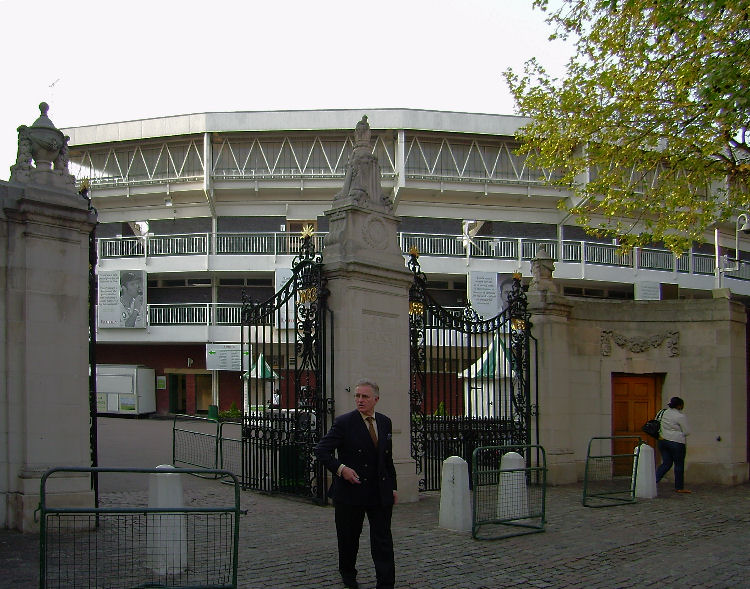
Graces Gate the front of Lords M.C.C today
During 1825 Lord showed an interest in building some houses on the edge of his ground although his interests were bought out by William Ward, a member of the club for £5,000. In the same year, Lord retired from the club that he had built. Lord died at West Meon, in Hampshire, in 1832.
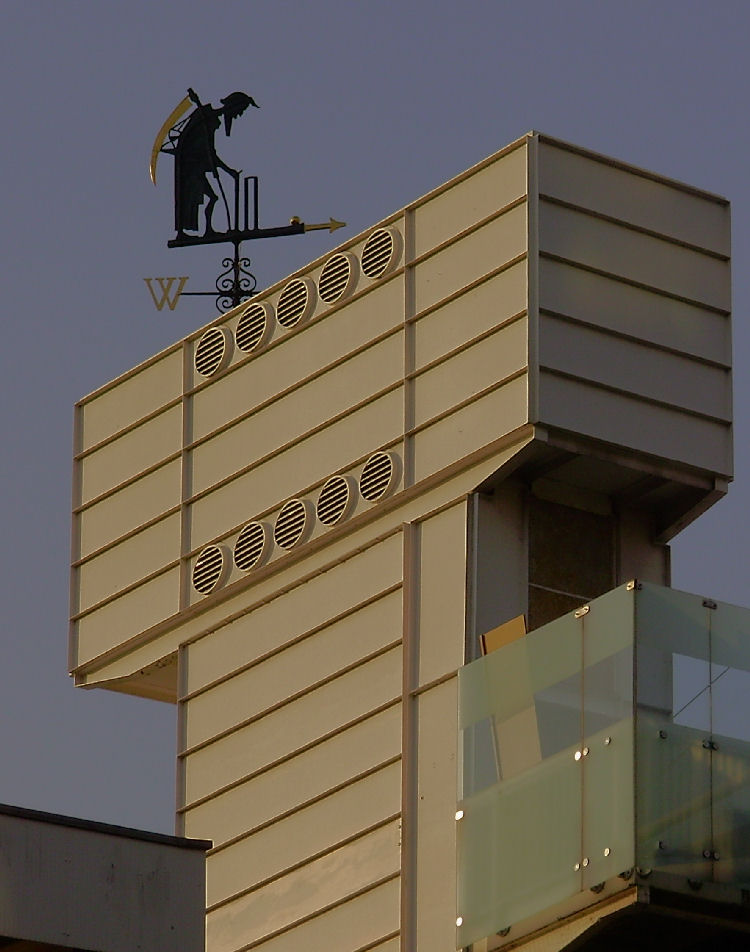
The Grim Reaper Weatherman on top of Lords.
London Time

Follow Us
The contents of this website are the property of knowledgeoflondon.com and therefore must not be reproduced without permission. Every effort is made to ensure the details contained on this website are correct, however, we cannot accept responsibility for errors and omissions.
© Copyright 2004 -
Contact Us | Advertise